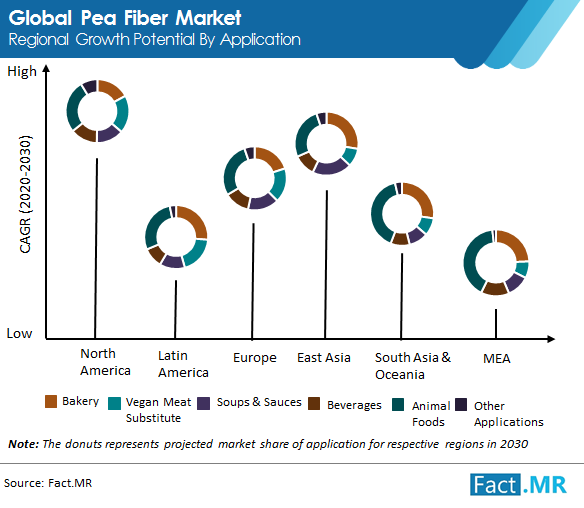Pea Fiber Market In the quest for sustainable and nutritious food ingredients, pea fiber has emerged as a remarkable contender. Derived from peas, a leguminous plant known for its environmental benefits, pea fiber is rapidly gaining attention in the food and beverage industry. This article delves into the expanding pea fiber market, its benefits, applications, and its role in promoting both human health and sustainability.
For More insights into the, Request a Sample of this Report:
Pea fiber is a natural dietary fiber extracted from the hulls of peas. As consumer demand for plant-based and functional foods continues to grow, pea fiber has garnered significant interest due to its numerous attributes. Rich in soluble and insoluble fiber, pea fiber offers a range of health benefits while also contributing to the development of sustainable food products.
Health Benefits and Nutritional Value
Digestive Health: Pea fiber is a potent source of dietary fiber, which aids in digestion and supports a healthy gut. Its prebiotic properties stimulate the growth of beneficial gut bacteria, contributing to overall digestive well-being.
Weight Management: High-fiber foods like pea fiber promote satiety, helping to control appetite and manage weight. Including pea fiber in formulations can lead to more satisfying and filling food products.
Blood Sugar Regulation: The soluble fiber in pea fiber can help regulate blood sugar levels by slowing down the absorption of glucose, making it a valuable addition to products targeting diabetes management.
Heart Health: Consuming adequate dietary fiber, such as that found in pea fiber, is associated with lower cholesterol levels and a reduced risk of heart disease.
Applications in the Food Industry
Pea fiber’s versatility has enabled its integration into a wide array of food products:
Bakery Products: Pea fiber enhances the nutritional profile of baked goods, adding fiber content without compromising taste or texture. It can improve the moisture retention and shelf life of bread and other baked items.
Meat and Meat Alternatives: In the pursuit of healthier and sustainable meat products, pea fiber is used as a binder and texturizer in meat formulations. It can mimic the mouthfeel of meat while reducing the need for additives.
Snacks and Cereals: Pea fiber can be incorporated into snack bars, cereals, and granola to boost fiber content and create more satiating and nutritious products.
Beverages: Pea fiber can be used to develop fiber-rich beverage formulations, including smoothies and functional drinks, appealing to health-conscious consumers.
Sustainability and Environmental Impact
Peas are known for their nitrogen-fixing properties, which enrich soil health and reduce the need for synthetic fertilizers. As a byproduct of pea processing, pea fiber contributes to reducing waste and utilizing the entire pea crop, aligning with sustainable and circular economy principles.
Market Growth and Future Prospects
The pea fiber market is experiencing significant growth as consumers seek healthier and more sustainable food options. The rise of plant-based diets, clean label trends, and the demand for functional foods have propelled pea fiber into the spotlight. As research continues to uncover its health benefits and applications, the pea fiber market is poised to expand further, transforming the way we approach nutrition and sustainability.
Conclusion
Pea fiber’s journey from agricultural byproduct to a prized ingredient in the food and beverage industry exemplifies the potential of sustainable innovation. With its remarkable health benefits, versatile applications, and positive impact on the environment, pea fiber is proving to be a true game-changer in the quest for healthier, more nutritious, and planet-friendly food options. As the market continues to grow, pea fiber’s influence is set to reshape our dietary choices and contribute to a more sustainable future.
